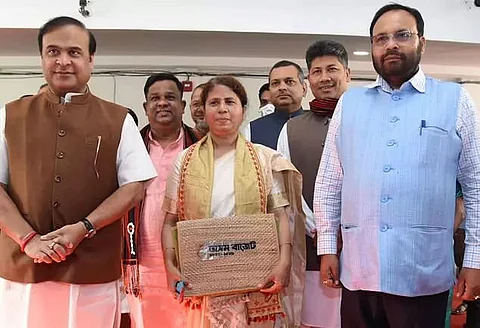
- Home
- Live Blog
- Breaking News
- Top Headlines
- Cities
- NE News
- Sentinel Media
- Sports
- Education
- Jobs

Various proposals and announcements for the 2022-23 financial year proposed in the budget presented by the Assam Finance Minister Ajanta Neog in the State Assembly has triggered new hopes and aspirations of growth. Statements laid in the House along with the budget as required under the Assam Fiscal Responsibility and Budget Management Act, 2005 indicate that resource mobilizations and fiscal management to achieve the proposed goals set in the budget is going to be a huge challenge for the State government. The state's resources consist of tax revenue, non-tax revenue, the share of central taxes and grants-in-aid from the Central government. The state recorded a turnaround in its Tax Revenue growth in 2016-17 when it jumped from 7% in 2015-16 to 20% in 2016-17. Following the introduction of the Goods and Service Tax (GST) about 71% of the State's tax revenue has got pooled into GST leaving very little scope with the State Government to augment its revenue from GST by way of tweaking GST rates since such power is vested in GST Council, highlighted the statement. The major component of non-tax revenue is royalty on petroleum crude which accounts for about 65-70% of total non-tax revenue collection and due to volatility of prices of petroleum products on account of fluctuations in the international crude oil prices, the growth of the state's non-tax revenue is "erratic" and "fluctuating". Other sources of non-tax revenue include royalty on coal and gas, receipts from interest and dividends and forest produce. Citing reports of the Accountant General, the statement presents the decline in aggregate non-tax revenue collection from Rs 8,221 crore in 2018-19 when it registered 102% growth, to Rs 5,539 crore in 2019-20 which further declined to Rs 2,900 crore in 2020-21 due to COVID-19 pandemic. The decline in 2019-20 is attributed to the Central government not releasing the arrear payment towards oil royalty making fiscal management difficult for the state. Finance Account data show that development expenditure as a percentage of total revenue expenditure marginally declined to 64.39 in 2020-21 from 65.88 in 2019-20 while the percentage of non-development expenditure to total revenue expenditure increased to 35.02 in 2020-21 from 33.57. Rising capital expenditure demonstrates the efforts by the State Government to push development through the creation of durable assets so that it spurs economic growth. More contraction of revenue expenditure can unlock more resources for capital expenditure. The percentage share of capital expenditure jumped from 6.73% in 2015-16 to 16.16% in 2018-19 and has been steady at around over 16%. Stagnancy in non-tax revenue collection and a marginal increase in own tax revenue against rising capital and revenue expenditures have led to the rise in fiscal deficits of the state which required the state to depend on open market borrowings to mobilize required resources to stay focused on the development and implement its budget announcement. The statement presented to the Assembly explains that exclusion of the states from borrowings from the National Small Savings Fund as recommended by the 14h Finance Commission compelled the states to depend more on open market borrowings to finance the gross fiscal deficit. The State government justifies higher market borrowing on the rationale that public Investment in the infrastructure expands the productive capacity of the economy and thus, expands the revenue-generating potential of the state. The outstanding debt of the State government increased from Rs 31300 crore at the end of March 2015 to Rs 82741 crore at the end of March 2021, and the rise in market borrowings coupled with lower growth of the Gross State Domestic Product pushed the debt to GSDP ratio from 15.99 at the end of March 2015 to 21.72% at the end of March 2020-21 which has triggered apprehension over debt servicing capacity of the state. The time of the release of finance commission awards could have lessened the burden of market borrowings for the state. The statement points that against the 14th Finance Commission recommendations of devolution of an amount of Rs 34374 crore as shares of central taxes for 2019-20, the revised allocation in the Union Budget was Rs 23670 crore while actual receipt by the state was Rs 21721 crore. The 15th Finance Commission in its Report recommended a tax devolution amount of Rs 26,776 crore for the state in 2020-21, however, the Union Budget has provided only Rs 24,553 crore whereas the actual receipt is Rs 18629.32 crore. As salary and pension account for 58% of the total revenue expenditure, the State government employees owe a moral responsibility to make meaningful contributions by ensuring timely implementation of schemes and projects, quick disposal of official files, timely submission of utilization certificates and improving the state's revenue collection and improvement in fiscal management. While the increasing allocation of capital expenditure is targeted to accelerate growth and development, delay in implementation of projects leads to escalation of cost. Prudent fiscal management is the key to the implementation of budget promises.